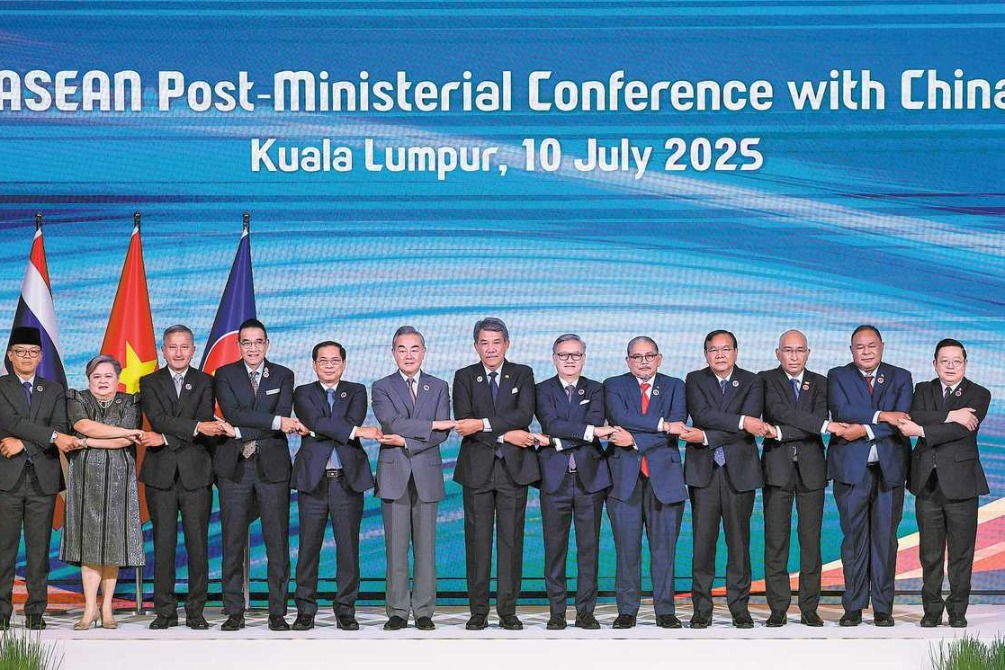China Launches New Long-Term Visa Access For ASEAN Nations, Driving A Surge In Business Travel, Unlocking Airline Growth, And Deepening Economic Cooperation Throughout The Region - Travel And Tour World
Tuesday, July 8, 2025

China announces new long-term visa entry for ASEAN nations as part of a strategic plan aimed at accelerating regional development by easing entry barriers on businessmen and experts, giving a boost to a rising tide of cross-border mobility, expanding airline linkages, and enhancing economic cooperation across Southeast Asia. Granting multiple-entry visas to businessmen and experts from ASEAN member states, China is positioning itself as a central hub for airlines travel, investment, andtrade, boosting its profile as a major partner of the economic integration of theregion.
The Chinese move to impose five-year multiple-entry visas on Southeast Asia’s business visitors is reshaping the face of future regional flying and economic connectivity. It removes key entry barriers and holds out a prospect of a massive influx of new business travel, rising flight traffic, and new economic partnerships between China and the ASEAN bloc.
This month China announced its intention to grant nationals of all ten member states of ASEAN, and Timor-Leste, long-term business visas. This initiative directlystreamlines one of the globe’s most rapidly expanding economic regions by simplifying travel for entrepreneurs, investors, and executives hitherto held back by time-consuming and bureaucratic impediments to travel. Eligible visitors can now enter and exit China multiple times, once a finding of suitability has been made and visas have been granted for a period of up to five years.
This policy shift comes at a pivotal time for the Asia-Pacific. Demand for international travel has been rising steadily, and especially in Southeast Asia, as numerous firms rely on China to coordinate supply lines, supply products, and create joint ventures. This new visa policy stands to sharply increase these exchanges, with spillover effects on airlines, tourist infrastructure, and regional economies.
Southeast Asia-based airlines have already been preparing themselves to benefit from this change. Low cost carriers, which serve a massive pool of small and medium enterprises (SMEs), see the policy as a once-in-a-lifetime opportunity to boost flight frequencies and extend their networks. These SMEs, which form the majority of the business community in ASEAN countries, now have improved access to Chinese markets, factories, and services.
Various airlines already have routes from Southeast Asia to nearly 20 Chinese cities. Airlines hope to add more destinations and more regular routings after the new visa. Airlines are targeting to specialize in maximizing businessman travel—getting aircraft to take off and land at times so businessmen would have time to go to a meeting or sign a contract and return in a day if needed. Airlines are shifting their emphasis to day departures and early morning arrivals as a method of maximizing productivity.
Nationally, airlines within the region are reviewing their strategies. More than a few are considering increased seat capacity to China and generating focused campaigns crafted to appeal to corporate travelers. These airlines would like to announce mutual promotions, loyalty schemes, and incentive offers geared toward business people and Meetings, Incentives, Conferences and Exhibitions (MICE) sectors. More predictable travel times will make planning trips and executing mass scale events by regional firms with Chinese partners that much simpler.
This program of visas is also expected to spur additional revitalization in Asia’s airline market. Airlines on the continent were hit hard by the pandemic, but during the past couple of months, positive signals of resurgence have been evident. In its most recent data, the Association of Asia Pacific Airlines showed that between last January and May, airlines carried more than 158 million international passengers—up 12 percent from a similar period last year. Airfreight volumes globally also picked up by 4.5 percent, showing a robust resurgence of trade and cargo transport.
However, airlines are still susceptible to outside pressures. Fuel price spurts, shifting demand overseas, and geopolitics still impact planning and profit. But China’s simplified visa entry is a timely boost to national airlines. It’s a sign China is eager to grow economic linkages and achieve steadier biz travel, and a development that’s especially significant amidst world economic unease. The visa initiative builds on earlier travel relaxation measures by China. China had already signed mutual visa waivers with Malaysia, Thailand, and Singapore before this latest action. These earlier agreements had formed a footing of cooperation and mutual trust, here extending to a broader circle of countries in Southeast Asia. In lifting administrative restrictions, China’s authorities are positioning themselves as a key partner in the economic recovery of the region following the pandemic.
For countries like the Philippines, airlines are streamlining their business models to respond to this new market. On short China flights, functional and affordable solutions are more important than luxury or first-class solutions among business travelers. In making their buying decisions, such travelers place more importance on consistencies in flights, frequencies of departures, and aggregate travel time than on lounge access or longer legroom. Budget airlines are therefore targeting this group of passengers by focusing on operational efficiency and on-schedule reliability.
At the same time, full-service airlines invest in product upgrades that would cater to high-end passengers. New products include variable cost structures, greater comfort, and tailored services. Airlines perfect their in-flight experience to appease working professionals, who demand flexibility, connectivity, and fewer delays.
Another rising trend is broadening flight networks to reach greater Chinese second- and third-tier cities. Instead of going after major hubs such as Shanghai or Beijing, airlines are broadening their routes to reach surging economic centers around inland Chinese provinces. This more inclusive connectivity approach not only generates new sources of business routes but also promotes regional tourism and investment.
The long-term visa plan can unlock a new era of China–Southeast Asia cooperation. By lifting short-term visa restrictions and simplifying entry procedures, the policy fosters increased mobility, longer and deeper business connections, and smoother supply-chain integration. It is conducive to a bigger picture of regional economic integration and mutual flourishing.
China’s new long-term visa initiative for ASEAN nations will boost regional corporate travel, expand routes for airlines, and boost economic linkages by making entry easier for entrepreneurs and improving cross-border mobility across Southeast Asia. As airlines reshape their operations and businesses intend to grow their presence into Chinese markets, their host region stands on the brink of a great comeback. Beyond a travel permit, the five-year business visa is a strategic link between economies, a force behind innovation, and a reaffirmation of mutual ambitions of Asia’s rising nations.
You may also like...
Diddy's Legal Troubles & Racketeering Trial

Music mogul Sean 'Diddy' Combs was acquitted of sex trafficking and racketeering charges but convicted on transportation...
Thomas Partey Faces Rape & Sexual Assault Charges

Former Arsenal midfielder Thomas Partey has been formally charged with multiple counts of rape and sexual assault by UK ...
Nigeria Universities Changes Admission Policies

JAMB has clarified its admission policies, rectifying a student's status, reiterating the necessity of its Central Admis...
Ghana's Economic Reforms & Gold Sector Initiatives

Ghana is undertaking a comprehensive economic overhaul with President John Dramani Mahama's 24-Hour Economy and Accelera...
WAFCON 2024 African Women's Football Tournament

The 2024 Women's Africa Cup of Nations opened with thrilling matches, seeing Nigeria's Super Falcons secure a dominant 3...
Emergence & Dynamics of Nigeria's ADC Coalition

A new opposition coalition, led by the African Democratic Congress (ADC), is emerging to challenge President Bola Ahmed ...
Demise of Olubadan of Ibadanland
Oba Owolabi Olakulehin, the 43rd Olubadan of Ibadanland, has died at 90, concluding a life of distinguished service in t...
Death of Nigerian Goalkeeping Legend Peter Rufai

Nigerian football mourns the death of legendary Super Eagles goalkeeper Peter Rufai, who passed away at 61. Known as 'Do...





